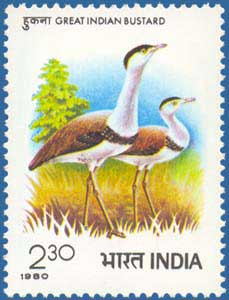The Great Indian Bustard (Ardeotis nigriceps) is in deep trouble, and nearing the end of its days. Today its population, in just three Indian states and a handful in Pakistan, is estimated at about 200 to 300. Experts put the number lower, at around 150. This makes the GIB, as it is sometimes referred to, one of the rarest birds in the world. "Population estimates... suggest that the species has undergone a decline equivalent to around 82 per cent over 47 years," says BirdLife International, a non-profit group. The great Indian bustard is omnivorous. Apparently, insects, consisting mainly of Orthoptera, but also beetles, particularly Mylabris sp. are preferred in the diet. Alternatively, they will take grass seeds, berries (largely of the genera Ziziphus and Eruca), rodents and reptiles (in Rajasthan they are known to take Uromastyx hardwickii. In cultivated areas, they feed on crops such as exposed groundnut, millets and pods of legumes.
Source: The Straits Times, 1 December 2015
http://www.straitstimes.com/asia/se-asia/while-people-argue-a-bird-walk…

- Log in to post comments
